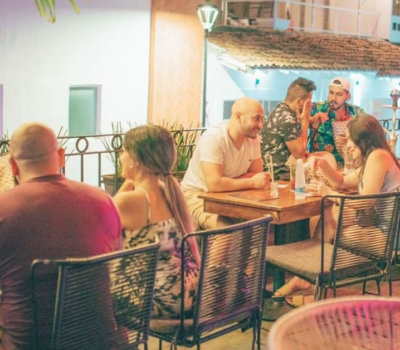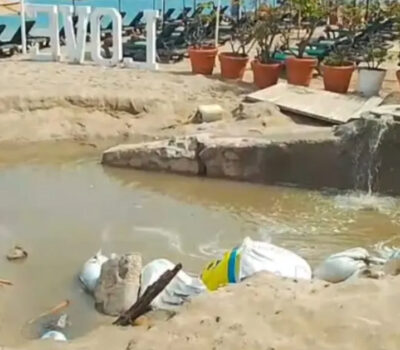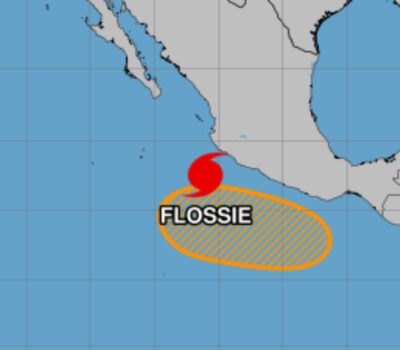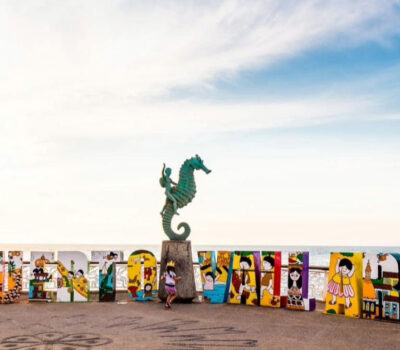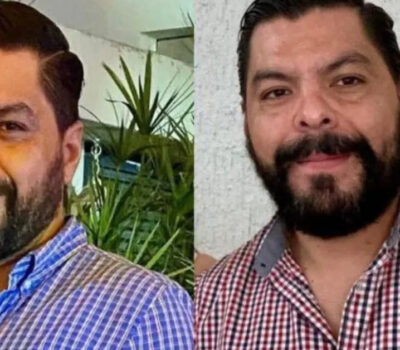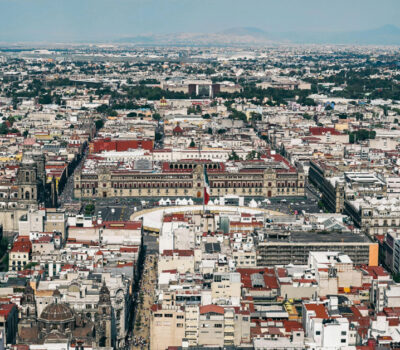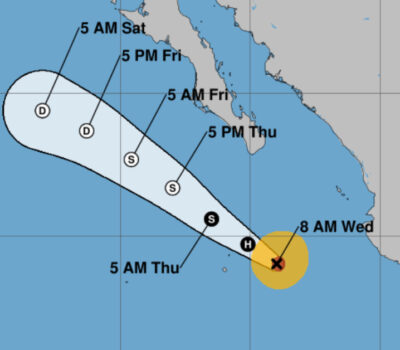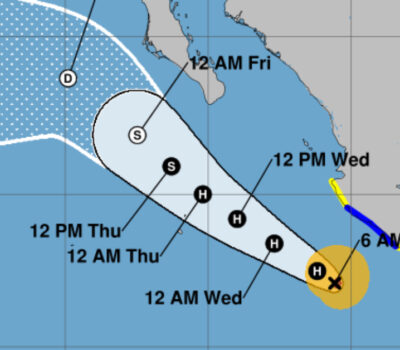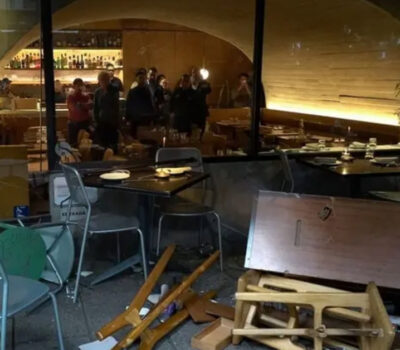Transcript
GWEN IFILL: Finally tonight, Americans have long crossed the border with Mexico in search of cheaper medical procedures, dental work and prescription drugs. Now a new trend is afoot: finding a place to live out retirement years.
Special correspondent Kathleen McCleery has the story, part of our occasional series about long-term care.
KATHLEEN MCCLEERY: David Truly, known as the Barefoot Professor, plays in a local band near Lake Chapala in Central Mexico. He wrote his Ph.D. dissertation on the migration of retirees to this area.
DAVID TRULY, Autonomous University of Guadalajara: Kind of a range between maybe 8,000 to about 15,000, 16,000 full-timers, and then — but, in the winter, it can blow up in just this community to maybe 30,000.
KATHLEEN MCCLEERY: Mexico’s largest lake is surrounded by emerald green mountains. The village of Ajijic draws artists and writers. Cobblestone streets are dotted with galleries and restaurants serving international cuisines.
No Spanish? No problem. With Hawaii’s latitude and Denver’s altitude, the temperate climate has attracted retirees for decades. Mexicans have traditionally taken elderly relatives into their own homes. So, the demand for assisted living and nursing care wasn’t high, until foreigners, many of them Americans, flocked here. Now they are getting older and they need more care.
DAVID TRULY: People are not just aging here, but for the first time, they’re staying here and they’re not returning home. So they’re aging and dying in place here.
KATHLEEN MCCLEERY: When 81-year-old John Simmons’ doctor told him he shouldn’t live alone, he came here to Abbeyfield, an independent senior living facility. His one bedroom casita sits in a lush garden near a lap pool and a covered patio.
JOHN SIMMONS, Retiree: I love the light. I love the cross-ventilation. I like the kitchen tucked away. And so it gives me room for an office and, of course, the views out the windows with all the wonderful plants. The landscaping here, I think, is fantastic.
KATHLEEN MCCLEERY: The average cost for independent living in the U.S. is about $2,500 a month.
Here:
JOHN SIMMONS: The rent, including all utilities, connections for Internet, television, all of those things, plus three meals a day, just a little over $1,000 a month.
KATHLEEN MCCLEERY: One reason for the cost difference, labor is cheaper here. The minimum wage is just 70 pesos, or less than $5 a day. For those who need a bit more care, there’s been a boom in assisted living and nursing homes.
Seventy-two-year-old Rosemary Grayson came here from Wales. She made headlines 50 years ago as the first “Playboy” centerfold from the United Kingdom and later went on to be a journalist.
ROSEMARY GRAYSON, Retiree: I was burnt out. I was in a state of near nervous breakdown. Lakeside Care put me together again.
KATHLEEN MCCLEERY: Ron Langley is a Floridian whose Mexican wife has a degree in geriatric care. Together, they run Lakeside Care. He’s proud of the food he serves and the caregivers he employs.
RON LANGLEY, Lakeside Care: They have a great respect for the elderly. And they will go out of their way to help an elderly person.
ROSEMARY GRAYSON: The people here have compassion written into their DNA. They do it before they know it. The caring is just like of being in an extended family.
KATHLEEN MCCLEERY: Assisted care like this in the United States averages about $3,800 a month. And nursing homes can cost upwards of $7,000. Langley charges between $1,400 and $2,000 a month for meals, cleaning, laundry and more.
RON LANGLEY: The only other thing that a patient or a resident here would pay for would be their medicines and their doctors.
KATHLEEN MCCLEERY: And that raises a potential concern: Does the area have top-notch health care? A new hospital just opened on the lake. Though Medicare benefits don’t apply in Mexico, doctor’s visits and prescriptions are often less than co-pays back home. And Mexico’s second largest city is just an hour away.
DAVID TRULY: We are very close to Guadalajara, which can really be considered kind of a medical hub of Latin America, some of the finest medical colleges in — there’s like three universities there.
KATHLEEN MCCLEERY: The Lake Chapala area is beginning to draw younger retirees, and some are bringing mom or dad along; 64-year-old Mark Woolley and his wife, Ann, bought a house here a year-and-a-half ago.
When his 86-year-old mother, Kempie McKenna, came for visit, she liked what she saw and chose a room at Abbeyfield.
WOMAN: The second time I came, I came with suitcases. It’s so relaxing here, with the sun coming in. The birds are up there. The flowers are blooming. It’s just lovely. And we’re just sitting and chatting.
MARK WOOLLEY, Retiree: She always considered it more like old-age storage, you know, a lot of the homes in the United States, and they weren’t very nice. And these were literally homes here that people live in and retire in, and with a bunch of friends.
KATHLEEN MCCLEERY: Senior care is a cottage industry in the Lake Chapala area now. There’s little oversight, no government regulation, no scheduled inspections. Many homes appear well-run, but there’s no guarantee, so it’s buyer beware.
Most places have just a handful of rooms, but that’s about to change.
DR. TRINO ZEPEDA, Mexico: We want to create a retirement community with all the services related with the aging in place.
KATHLEEN MCCLEERY: Dr. Trino Zepeda is working on a new large-scale development.
DR. TRINO ZEPEDA: This is assisted living apartments, and it’s going to be here.
KATHLEEN MCCLEERY: He expects to break ground later this year on a $35 million U.S.-style community, eventually housing 350 people, offering independent living, assisted, nursing and memory care.
Whether those plans succeed may depend on whether Mexico can overcome an image problem. The drumbeat of news about drug cartel violence has included the 2012 kidnapping and killing of 18 Mexican nationals near Ajijic. And the U.S. State Department warns citizens to exercise caution in the state of Jalisco.
But none of that worries Rosemary Grayson.
ROSEMARY GRAYSON: You’re a lot, lot safer than I felt in the U.K., and certainly in the U.S. I think they said 100 people — 100 Americans were killed in Mexico last year. And they have now said that it’s not a safe destination. Well, you tell me how many safe destinations in the cities of America there are.
KATHLEEN MCCLEERY: And one more concern: Life moves at a slower pace here.
DAVID TRULY: Manana could mean manana or the day after manana or a week after manana.
But, you know, there is something to be said for the kind of laid-back, almost, you know, wake-me-up-when-we’re ready mentality.
KATHLEEN MCCLEERY: Still, the thriving foreign community has lured baby boomers. The Lake Chapala Society, in business for 60 years, offers services for expats and others, from free eye exams, to bridge, to book clubs and volunteer opportunities.
Mark and Ann Woolley can imagine themselves living at Abbeyfield.
WOMAN: Oh, we’re putting our name on the list here.
KATHLEEN MCCLEERY: If the Woolleys are any indication, Mexico can expect an influx of Americans crossing the border for retirement.
I’m Kathleen McCleery for the PBS NewsHour near Lake Chapala, Mexico.
GWEN IFILL: If you would like to know a little bit more about Rosemary Grayson, who Kathleen just introduced us to, she tells the story of how she met “Playboy” publisher Hugh Hefner and became Miss October 1964. That’s on our Web site.
https://www.youtube.com/watch?v=vjAet-Af190
Transcript
GWEN IFILL: Finally tonight, Americans have long crossed the border with . . .

